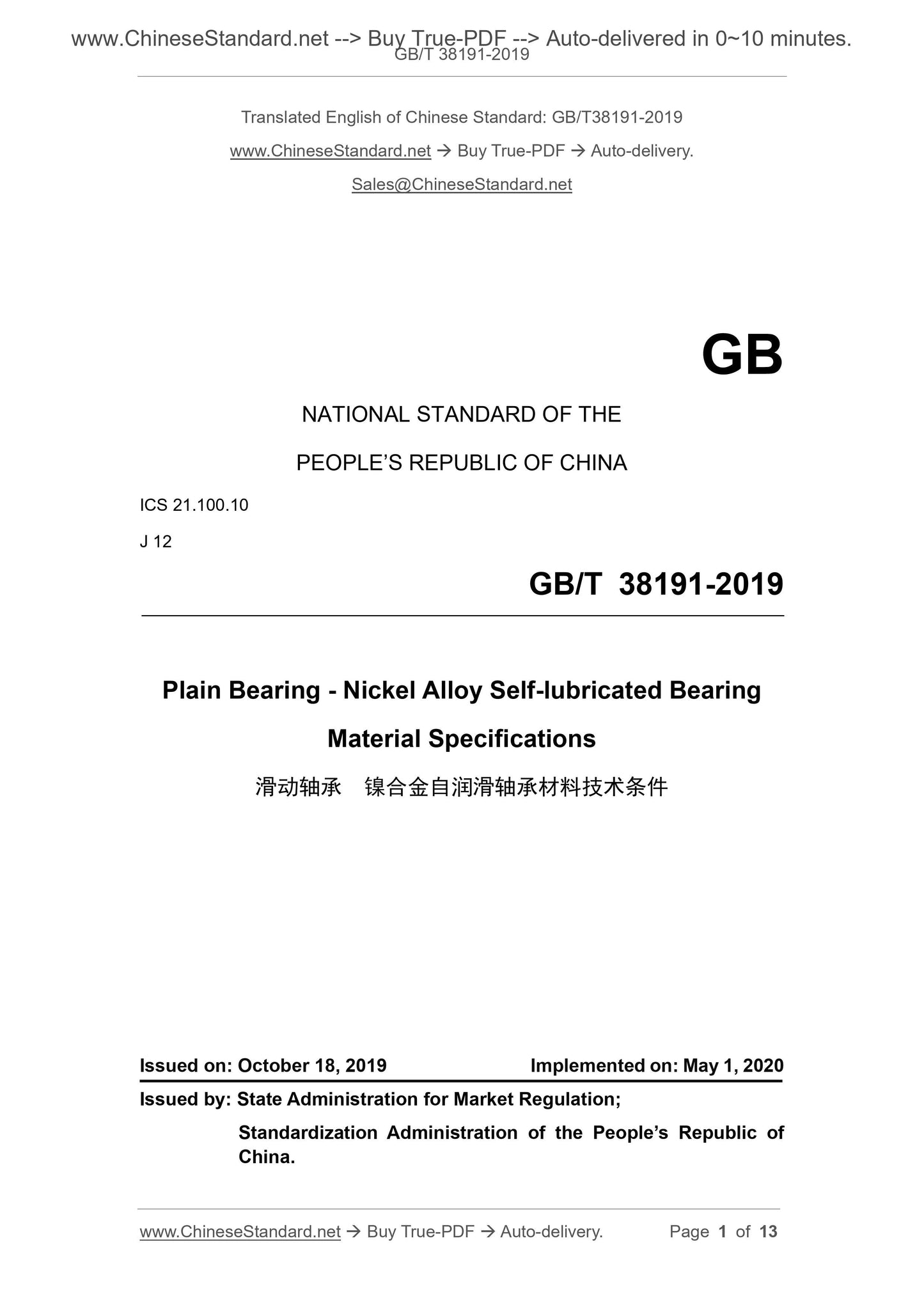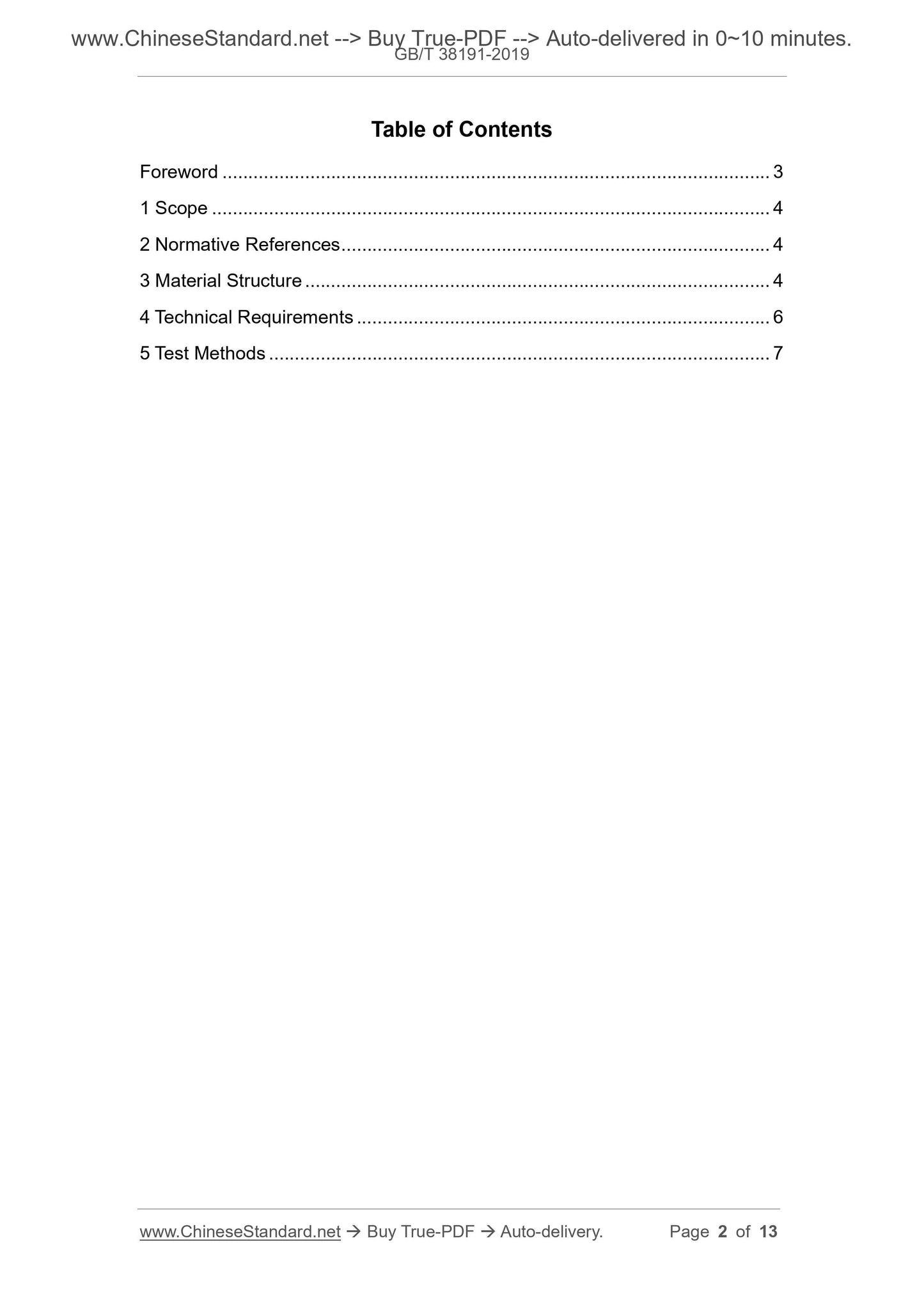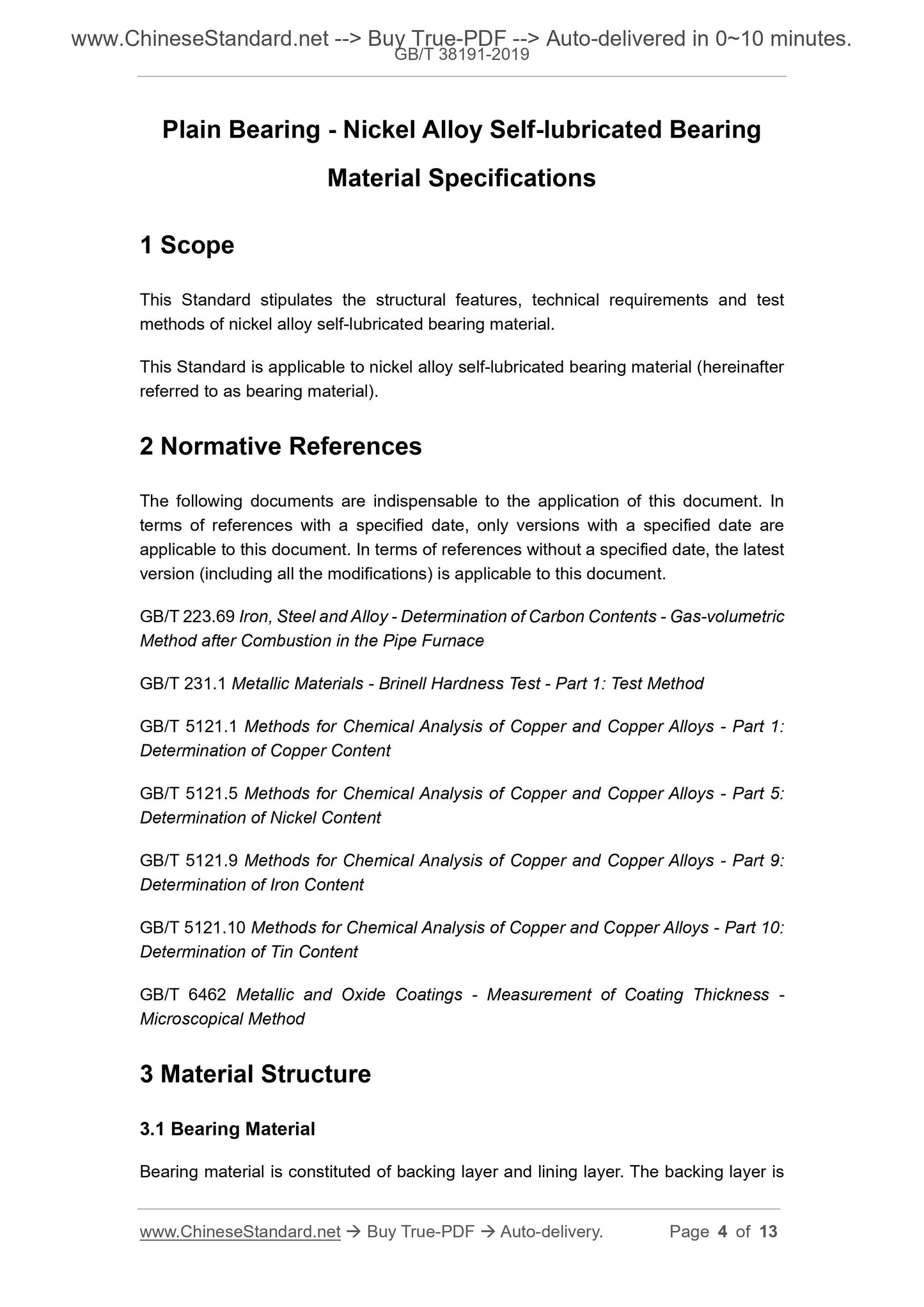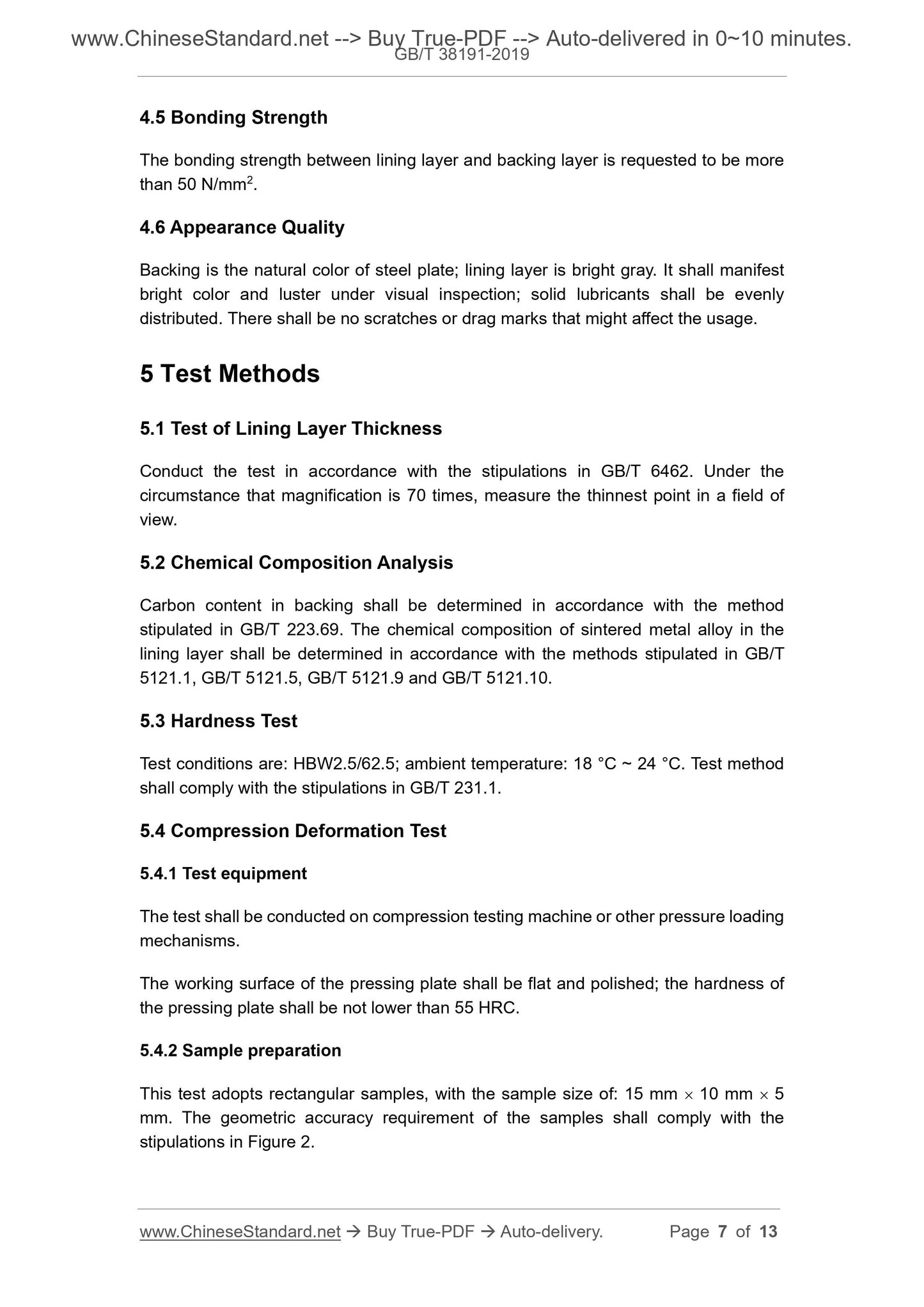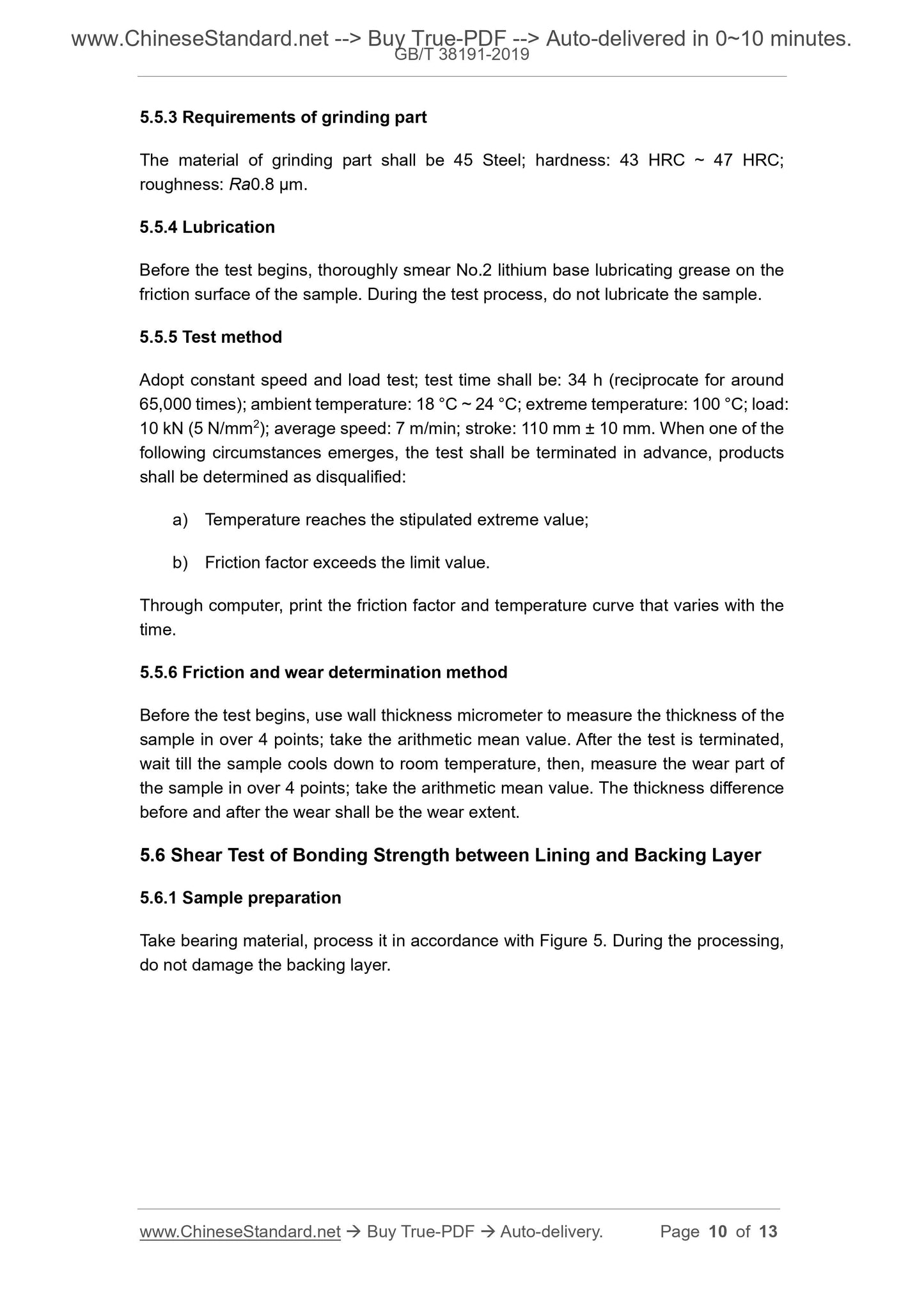1
/
of
5
www.ChineseStandard.us -- Field Test Asia Pte. Ltd.
GB/T 38191-2019 English PDF (GB/T38191-2019)
GB/T 38191-2019 English PDF (GB/T38191-2019)
Regular price
$140.00
Regular price
Sale price
$140.00
Unit price
/
per
Shipping calculated at checkout.
Couldn't load pickup availability
GB/T 38191-2019: Plain Bearing - Nickel Alloy Self-lubricated Bearing Material Specifications
Delivery: 9 seconds. Download (and Email) true-PDF + Invoice.Get Quotation: Click GB/T 38191-2019 (Self-service in 1-minute)
Newer / historical versions: GB/T 38191-2019
Preview True-PDF
Scope
This Standard stipulates the structural features, technical requirements and testmethods of nickel alloy self-lubricated bearing material.
This Standard is applicable to nickel alloy self-lubricated bearing material (hereinafter
referred to as bearing material).
Basic Data
| Standard ID | GB/T 38191-2019 (GB/T38191-2019) |
| Description (Translated English) | Plain Bearing - Nickel Alloy Self-lubricated Bearing Material Specifications |
| Sector / Industry | National Standard (Recommended) |
| Classification of Chinese Standard | J12 |
| Classification of International Standard | 21.100.10 |
| Word Count Estimation | 10,182 |
| Date of Issue | 2019-10-18 |
| Date of Implementation | 2020-05-01 |
| Issuing agency(ies) | State Administration for Market Regulation, China National Standardization Administration |
Share
